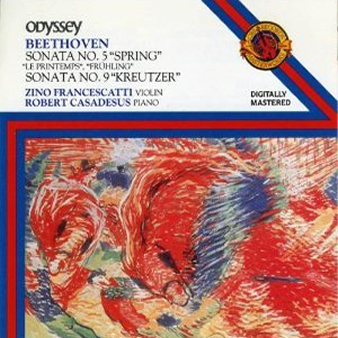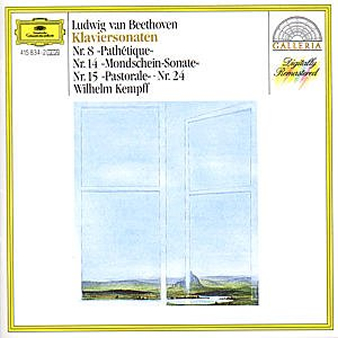 Ludwig Van Beethoven (1770-1827)
Ludwig Van Beethoven (1770-1827)
Piano Sonata in B Flat Major, Opus 106 – “Hammerklavier”
Piano Sonata in C minor, Opus 111
Edith Vogel, piano
Recorded in 1994 (BBC Music Magazine)
ONE-SENTENCE REVIEW:
Other than sounding like it was recorded in a high school gymnasium (lots of echo), when you cut through the sound clutter, the performance is excellent.
ORIGINAL LINER NOTES (by Misha Donat):
Beethoven published his first three sonatas, Opus 2 (1-3) in 1796, when he was in his mid-20s, and dedicated them to his former teacher Haydn.
Two decades and two dozen piano sonatas later, he began work on what was to be his final group of five sonatas. For some time he had been attempting to find German equivalents for the traditional Italian musical forms; and in 1817, he instructed his publisher to use the term “Hammerklavier” instead of “pianoforte” for all his future piano works.
 His instruction was, however, unambiguously carried out only in the case of Opus 106 – the second of his late sonatas. As a grand sonata in four distinct movements, the Hammerklavier stands apart from its companions. It is a work of unprecedented scope, with the broadest slow movement Beethoven ever wrote for the piano, and a finale consisting of a colossal fugue – which makes huge demand on performer and listener alike.
His instruction was, however, unambiguously carried out only in the case of Opus 106 – the second of his late sonatas. As a grand sonata in four distinct movements, the Hammerklavier stands apart from its companions. It is a work of unprecedented scope, with the broadest slow movement Beethoven ever wrote for the piano, and a finale consisting of a colossal fugue – which makes huge demand on performer and listener alike.
Like the Sonata Opus 111, the Hammerklavier was dedicated to Beethoven’s staunchest patron, Archduke Rudolph of Austria, and its fanfare-like opening phrase was designed to fit the words, “Vivat, vivat Rudolphus!”
Opus 111 was Beethoven’s last sonata, and also his final work in his characteristically dramatic key of C minor. This time there are only two movements; the first begins with an intense slow introduction, out of which the Allegro explodes with force.
The finale is a set of variations on a serene ‘Arietta.’ The variations gradually increase in intricacy until they reach a long-sustained trill, and the sonata comes to a close in an atmosphere of profound calm.
TRACK LISTING:
- 1-4: Piano Sonata in B flat Major, Opus 106 – “Hammerklavier”
- 5-6: Piano Sonata in C minor, Opus 111
FINAL THOUGHT:
I used to love with my new copy of BBC Magazine would come in the mid-1990s with the CD glued to the cover. The glue would tear the cover of the magazine off until they decided (after the first few issues and probably thousands of complaints) to put the CD in plastic. The performances were always hit or miss but I have a nice nostalgia for all those discs in my collection.
 Emily Sachs – President – Manka Music Group (A division of Manka Bros. Studios – The World’s Largest Media Company)
Emily Sachs – President – Manka Music Group (A division of Manka Bros. Studios – The World’s Largest Media Company)








